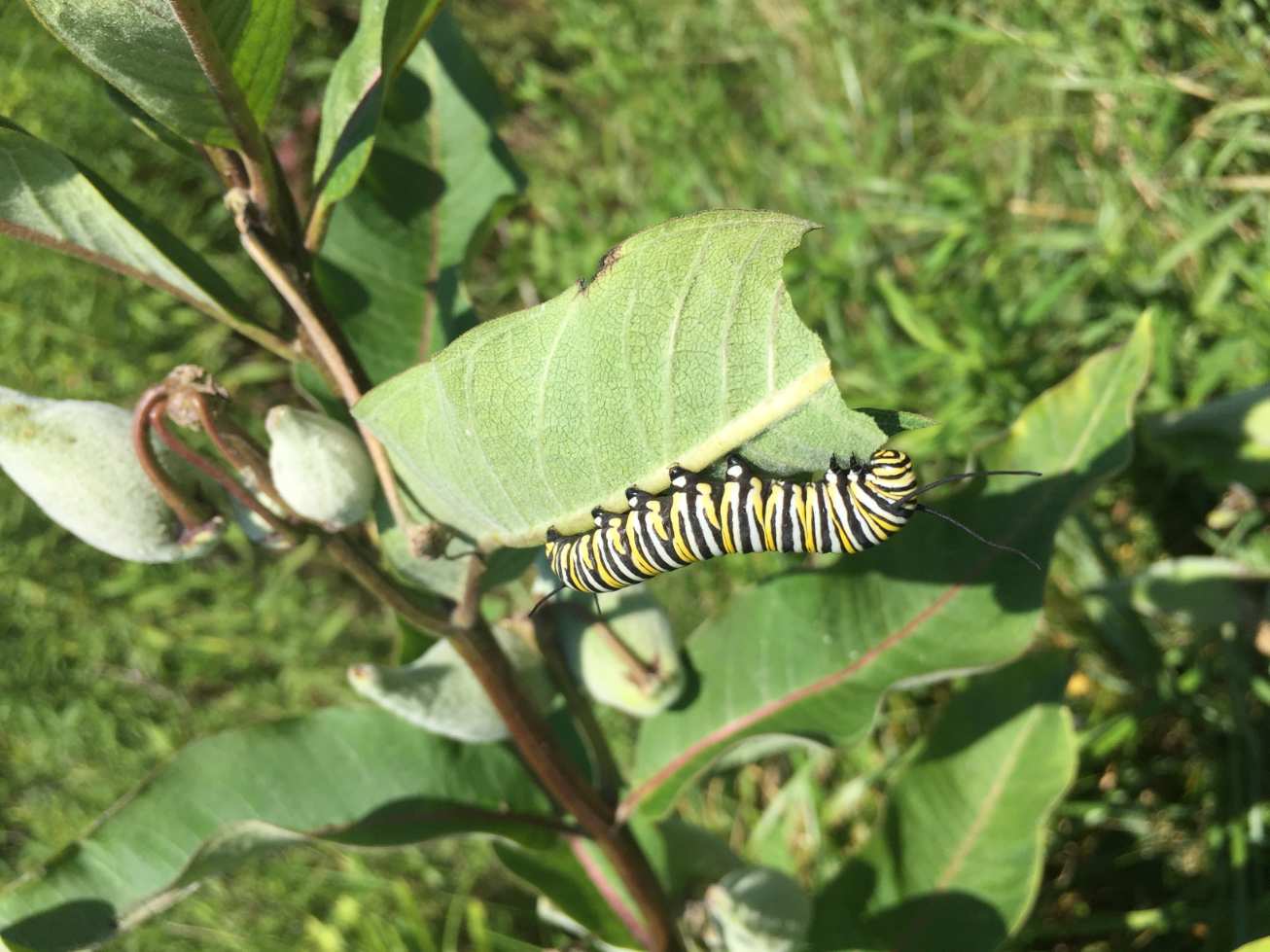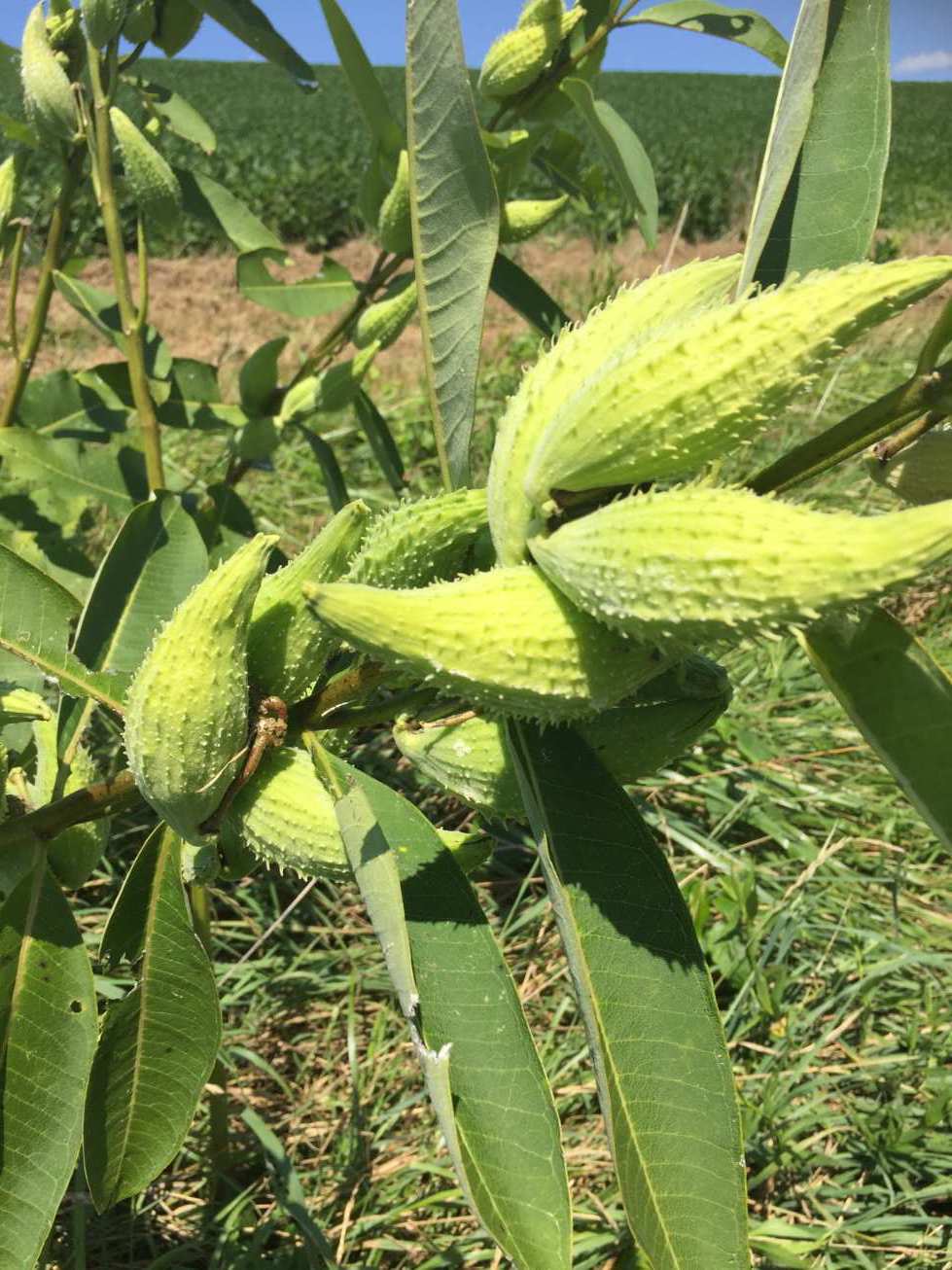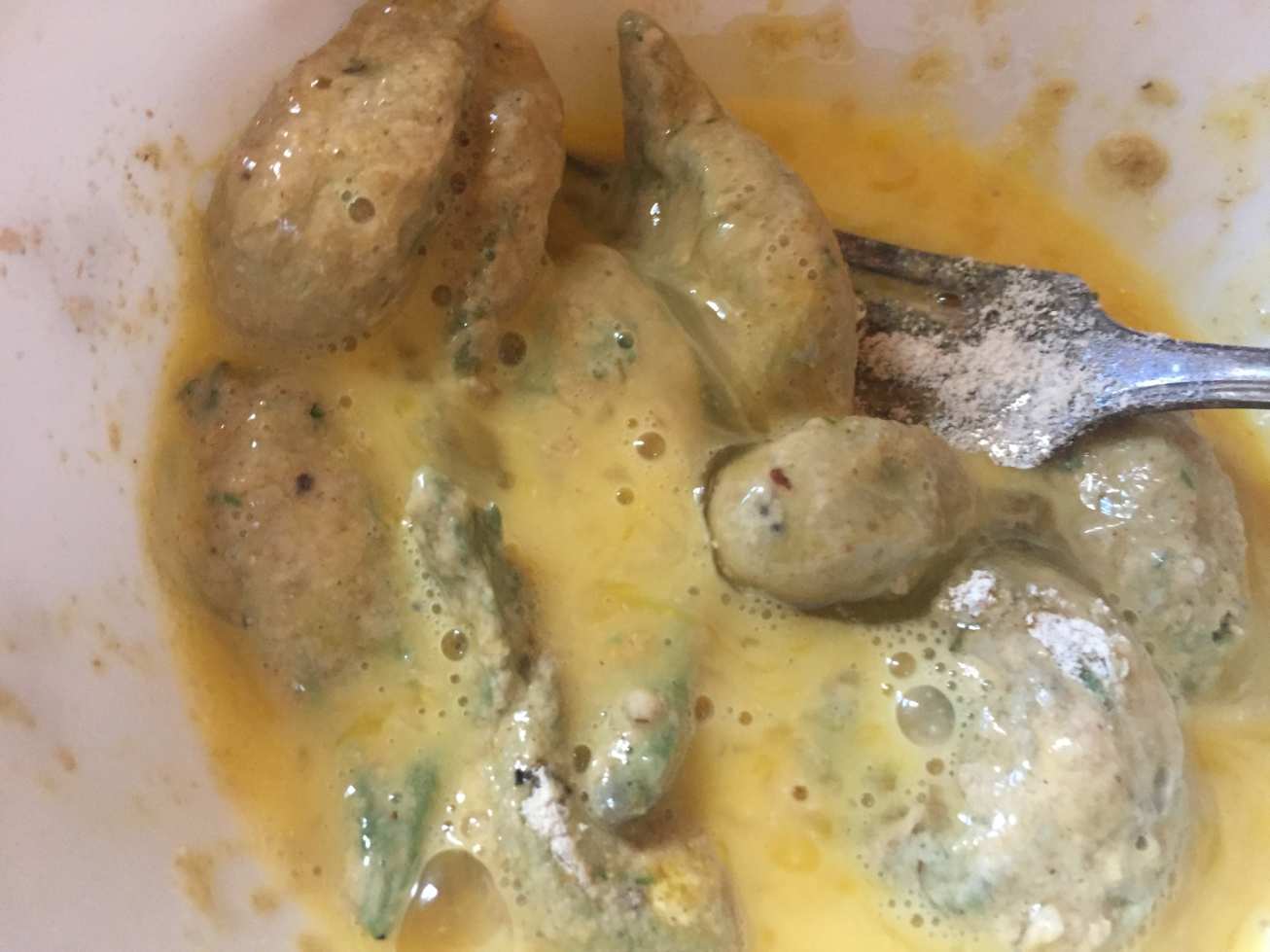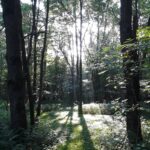I love the summer months for foraging wild foods. One of my very favorite wild foods is Common Milkweed (asclepias syriaca). Around here, the pods are just beginning to form–and it’s a great time to explore this delightful wild food. They have a light vegetable taste, maybe something like a sugar snap pea–very tasty and delicious. In fact, this is one of the best wild foods, allowing you to have four different harvests from the plant at four different times during the spring, summer, and early fall.
Ethical Harvesting and Nurturing Practice
With the excitement of harvesting from common milkweed, however, comes a serious responsibility. New farming techniques over the last 20 years have eliminated many of the hedges that used to be full of milkweed. Because of this issue, the monarchs have been in serious decline. When I teach this plant during wild plant walks, I tell people who want to eat milkweed that if you want to do so, you have to do your part first. Given the decline of monarchs and milkweed, it is necessary to first propagate it.

This is my suggestion: find where the milkweed grows in year 1. Observe it, see the monarch larvae enjoying the leaves. In the fall, come to the patch and harvest some of the seed pods (not all). Scatter some seeds just beyond the current patch. Then, scatter them in at least 4 new places that will be good for milkweed. If you have land, save seeds and start them in the spring (put them in the fridge for a few weeks before planting; they need a few weeks of cold stratification). If you don’t know where milkweed is at all, order some seeds online and start a patch. Plant them in your veggie garden or along with your house or in a community garden plot–they are a vegetable!
In year two, once you’ve established a new milkweed patch and have scattered the seeds, it is now ethical to harvest some (but not all) of that patch. Keep spreading the seeds anywhere you can. We need a lot more milkweed out there. So for every plant you harvest from, you should be planting three more! This is what reciprocation is all about–we can eat delicious vegetables from nature, but while we do so, give back more than we are taking.
Every year, I suggest scattering more of the milkweed seeds and getting others to grow them. We can all do our part to help these amazing butterflies and plants continue to thrive. I think doing whatever you can to create more milkweed is necessary before harvesting it. This creates a positive relationship with the plant, shows you are ready to give before you are ready to take, and honors the spirit of both the milkweed and the monarch.

Milkweed as a Vegetable
Ok, so assuming that you’ve done your due diligence to ethically harvest this plant, let’s talk about how great it is to eat! Milkweed offers four opportunities to eat different parts of the plant as the season goes on.
Shoots. The shoots in the spring are the first harvest you can enjoy from this plant. If you harvest the shoot, obviously, the rest of the plant won’t be there for the monarchs–so again, being sustainable in your harvesting and cultivating new beds of milkweed in places you have access to is really important. You can harvest these like bamboo shoots or asparagus–cut when young, usually around 6″ or so, and steam or saute in butter. Delicious!
Flower Heads: The unopened or slightly opened flower heads are the second harvest, occurring about a month after the shoots take off. For my bioregion, this is usually early to mid-June. The flower heads can be treated just like broccoli–steamed, sauteed, or batter-dipped and fried. I like to dredge them in cornstarch and some salt and herbs and give them a flash fry. Delightful!
Pods: My favorite harvest from milkweed is the flower pod. You want to look for the immature pods, 2″ or less across. You can eat the whole pod, and treat it pretty much like you’d treat okra (but I think okra tastes nowhere near as good as Milkweed!) Remember when harvesting these, you are preventing the plant from going into seed, so harvest selectively and ethically.
Silk: Probably the most unique harvest is silk; this comes from more mature pods before the seeds go brown. You would remove the outer pod (which as it gets bigger, it gets tougher, which pretty much applies to any green vegetable!). Once the outer pod is removed, you can pull out the inner silk. These can be baked into dishes or steamed–they literally get stretchy and taste kind of like a vegetable-flavored mozzarella. I know that sounds weird, but it’s super good.
Pan Fried Milkweed Pods Recipe
I’ll now walk you through one of my favorite ways of preparing this delicious vegetable. First, find yourself some milkweed pods that are 2″ or less in length. I wrapped mine up in a leaf when I was out and about and checked on a patch I had been cultivating for some years.

Usually, they don’t need washed or anything, but you can check and wash them if it’s appropriate.
Next, you dredge them in flour or cornstarch. A plastic bag or bowl works great for this. I like to use a bag and just shake it up with them inside.

Next, you dredge them in egg. (What? Aren’t you supposed to do the egg first? Actually, if you do the egg after, the batter is much lighter and fluffier!)

Then, you heat some frying oil in a pan (I am frying in olive oil, but you could do others) and when the oil is hot, pan-fry them. I prefer to use an iron skillet for this for even heat.

Next, you drain them on a paper towel.

My family enjoyed them with chicken, homemade refrigerator pickles, and a nettle-dill dip.

Take a bite and enjoy!

May your milkweed seeking and cultivation be fruitful and the land be abundant!




Reblogged this on Blue Dragon Journal.
Reblogged this on Paths I Walk.
Thank you for the reblog!
Neat! I didn’t know these are edible. Do you know how deep the roots go? I have a patch of unused ground where plants could go but since I believe it’s shallow soil (it exists as a buffer strip between 2 driveways) I would need to look for more shallow-rooted natives. Thanks!
I don’t; I haven’t dug them up. However, I often see them growing right along the edge of roads, in gravel patches, etc. I don’t think they require a lot of soil fertility–I’d give them a shot!
Reblogged this on dreamweaver333.
Thank you for the reblog!
Reblogged this on Rattiesforeverworldpresscom.
Thank you for the reblog!
you re very welcome
thank you so so very much for interesting article
thank you for sharing your wisdom
love ali
You are most welcome, Ali! Thank you for reading!
Thanks for this wonderful article! My friend who is a Master Naturalist and a citizen scientist, and very concerned about the plight of the Monarch—and is very uneasy about the idea of humans eating milkweed when it should be saved for the butterflies—was appreciative of how you discussed the responsibility to propagate before harvesting any. High praise coming from her!
By the way, I’ve been reading your blog for some time now—I love what you’re doing! Please keep it up. I share your deep interests in permaculture, druidry (specifically the AODA, I haven’t joined, but I have independently begun my Candidate studies and practices), magic, the creative arts, herbalism, and foraging.
Thanks once again!
-Anthony
Anthony,
Yes, I really believe that all wild food foraging should be approched from a place of reciprocity and respect for the living earth. Putting her first, and then, after we’ve put forward our own effort to help heal and regenerate nature, maybe harvesting and enjoying just a little bit :).
Glad to hear you are interested in AODA–please let me know if you have any questions about the order. Glad to have you as a reader and fellow druid along the path!
I have to admit I was surprised at this post! I’ve attended many workshops about milkweed/Monarch/butterflies and have always heard that every part of the milkweed is poisonous. Is it only certain types, or was that suggested to scare people off from using them for purposes other than butterfly aid?
Certain milkweeds are poisonous, like dogbane. I have found a lot of people assume every wild plant is poisonous when that’s not the case. In fact, they are considered a premier wild food :).